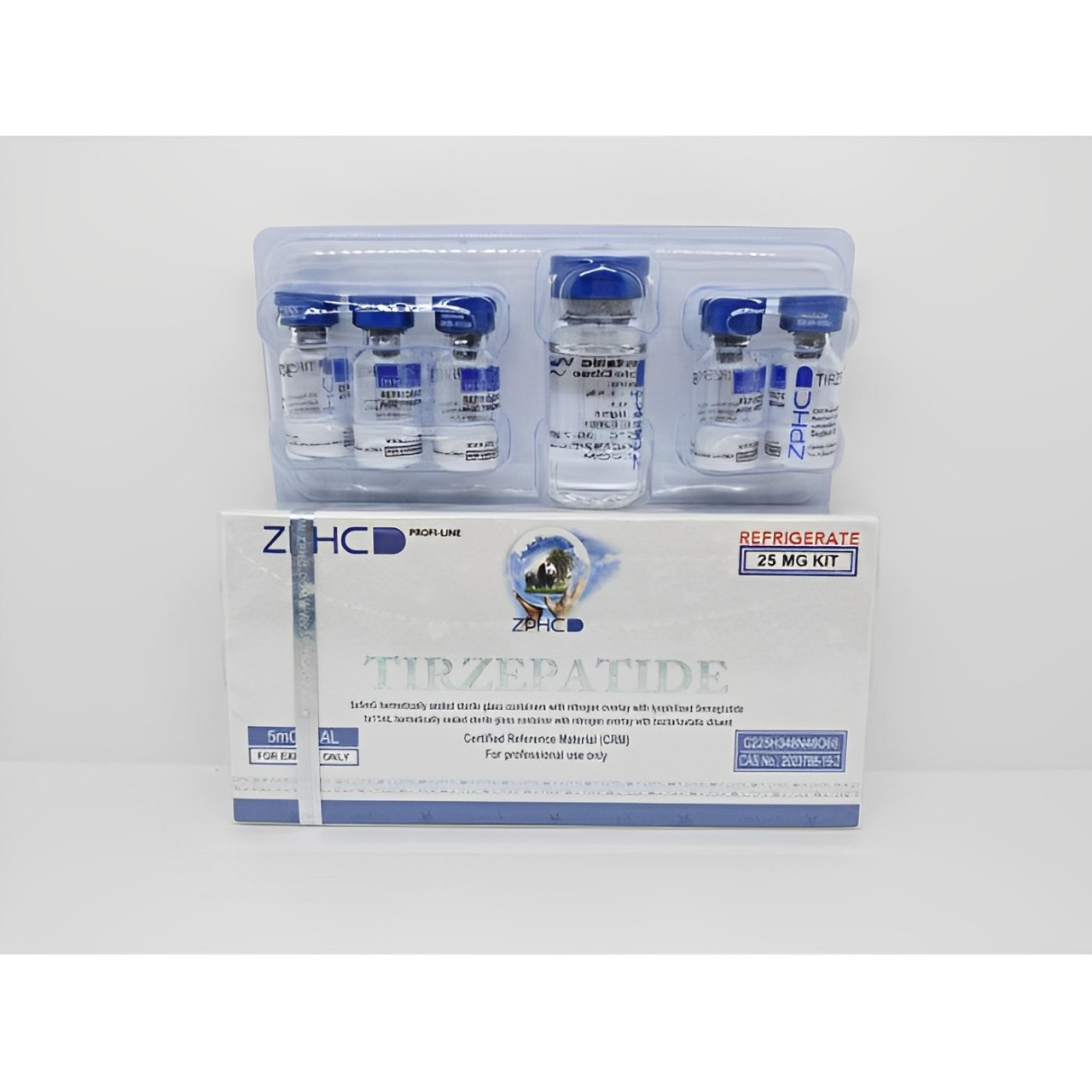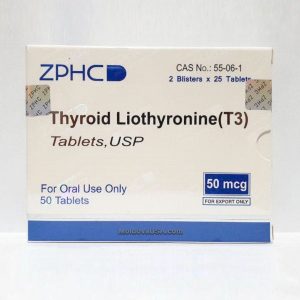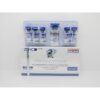Description
Tirzepatide is a medication used for treating type 2 diabetes and promoting weight loss. It belongs to two classes of medications: glucose-dependent insulinotropic polypeptide (GIP) receptor agonists and glucagon-like peptide-1 (GLP-1) receptor agonists. This means tirzepatide mimics the actions of these hormones in the body.
How Does Tirzepatide Work in the Body?
Tirzepatide works by mimicking the hormones GIP and GLP-1, resulting in several effects:
- It increases insulin production, which helps regulate blood sugar levels.
- It slows down stomach emptying, helping you feel fuller for longer.
- It reduces appetite by affecting hunger and satiety centers in the brain, leading to lower food intake and reduced cravings.
Insulin is a hormone that helps control blood sugar levels by signaling cells to absorb excess sugar from the bloodstream, storing it for later use as energy. People with diabetes may produce insufficient insulin, or it may not work effectively, leading to high blood sugar (hyperglycemia).
How Does Tirzepatide Help with Weight Loss?
Tirzepatide decreases appetite and enhances feelings of fullness by mimicking two hormones typically released after eating. These hormones target certain areas of the brain that control hunger and satiety, helping reduce food intake and calorie consumption. The medication is intended to be used in combination with a healthy diet and regular exercise.
How Effective is Tirzepatide for Weight Loss?
Clinical studies have shown that tirzepatide is highly effective for weight loss. In one trial, 89.4% of participants taking weekly tirzepatide injections lost at least 5% of their initial body weight over a 72-week period. The study also showed that average weight loss with tirzepatide was significantly greater than with placebo.
Comparison of Tirzepatide, Semaglutide, and Dulaglutide
Tirzepatide, semaglutide, and dulaglutide are medications originally developed for treating type 2 diabetes, and they also aid in weight loss. However, tirzepatide works by activating two types of receptors (GIP and GLP-1), while semaglutide and dulaglutide only act on GLP-1 receptors.
All three drugs help reduce appetite by signaling to the brain that you are full. They are self-administered via weekly injections, and their side effects, such as nausea, vomiting, and digestive issues, are similar due to their similar mechanisms. According to clinical data, tirzepatide at a dose of 15 mg shows a 90.9% effectiveness over 72 weeks, while semaglutide at 2.4 mg shows 83.5% effectiveness over 68 weeks. There is no weight loss data for dulaglutide, as it is not approved for this purpose.











